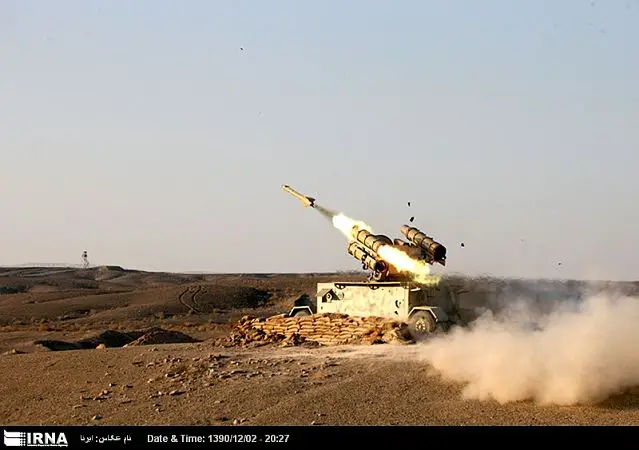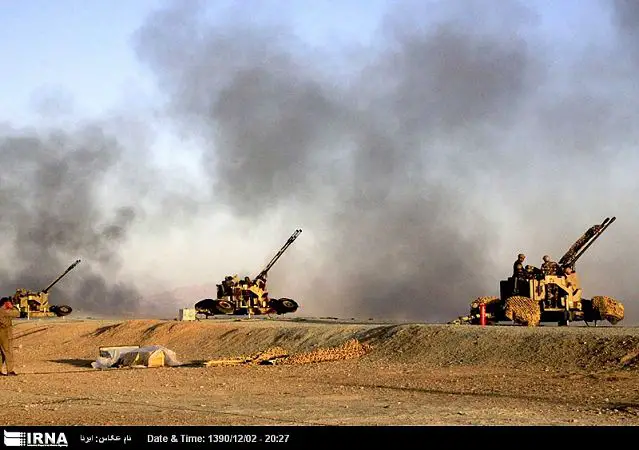| a | |||
Defense News - Iran |
|||
| Tuesday, March 20, 2012, 08:43 AM | |||
| Iran army plans to increase its air defense capability proportionate to enemy air power. | |||
Army
of Iran plans to increase its air defense capability proportionate to
the enemies' aerial power, a senior Iranian military commander said, stressing
that the country has achieved valuable experiences during the Iraqi imposed
war on Iran in the 1980s. |
|||
 Live firing military exercise code name "Sarallah" in February 2012 with the local-made Shahab Thaqeb FM-80 short-range air defense missile system. |
|||
Addressing the first conference of commanders of the air defense units of the Islamic Republic of Iran's Army and the Islamic Revolution Guards Corps (IRGC) here in Tehran on Sunday, Lieutenant Commander of Khatom ol-Anbia Air Defense Base for Intelligence Brigadier General Abbas Ameri stressed Iran's determination to increase its air defense capabilities. "We should disrupt the intelligence systems of the enemy and do our best to confront the imperialism and big powers by uniting IRGC and army," Ameri stated. Ameri noted that the Islamic Republic of Iran has valuable experiences that had been gained in 1980-88 Iran-Iraq War (Iraqi-imposed war against Iran). Last month, Iran's air defense units exercised their capability of targetting Unmanned Aerial Vehicles (UAVs) during massive air defense drills in the Southern province of Bushehr. Iranian forces shot down a hypothetical enemy's drone on the final day of Sarallah military drills. Iran's Air Defense Unit conducted massive air defense drills, codenamed Sarallah, in the country's Southern regions in February to test and assess the latest versions and productions of home-made radar and missile defense systems. |
|||
 The air defense units of Iran's Army deployed various anti-aicraft systems as the Samavat 35mm twin-cannon. |
|||
|
The air defense units of Iran's Army deployed various
systems to counter low-altitude aerial threats and successfully identified
and destroyed the mock enemy's UAVs and radar-evading aircraft at an altitude
of around 10,000 feet (about 3 kilometers).
Commander of Khatom ol-Anbia Air Defense Base Brigadier General Farzad Esmayeeli announced at the time that Iranian Army and the IRGC reviewed their latest air defense tactics during the drills. On the first day of the exercises, the air defense units of the Iranian Armed Forces under the command of Khatam ol-Anbia base managed to detect and identify invading aircraft and started confrontation with enemy warplanes using air defense systems and Scramble and CAP air defense planes. During the second day of the drills, Iran's air defense force assessed the preparedness and performance of its air defense artillery and mid-range missile systems against low-altitude aerial threats. Iran's air defense units assessed the performance and capabilities of different types of mobile and fixed radar systems on the third day of Sarallah military drills in Southern Iran. During the wargames, different fixed and mobile radar systems which have been manufactured and upgraded by Iranian experts and are under the control of Iran's integrated air defense network were used. Kasta and NEBO radars as well as the Iran-made Kashef (Discoverer) and Matla ol-Fajr radars were used to detect and identify aerial threats. Iran's home-made air defense radar systems can easily detect cruise missiles and drones. |
|||
Iran army plans to increase its air defense capability proportionate to enemy air power 2003123
- Posted On














